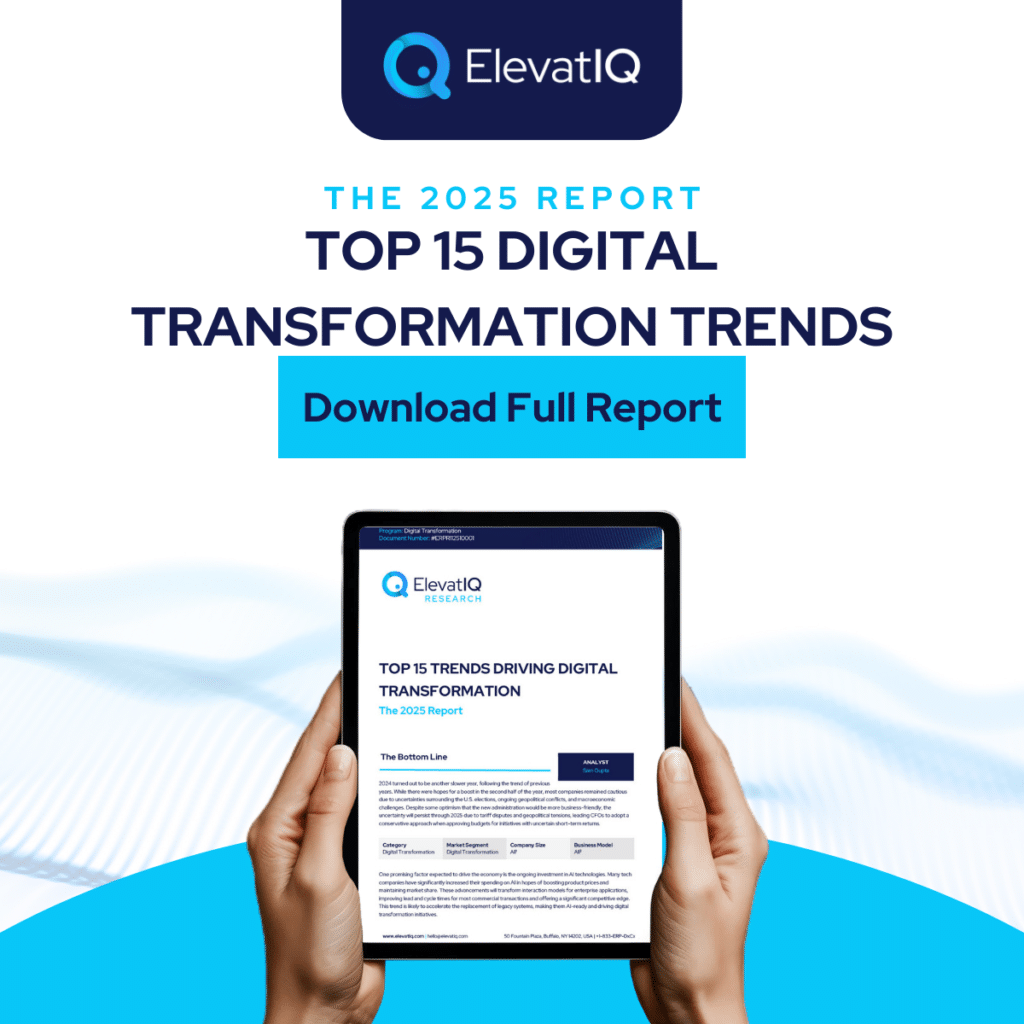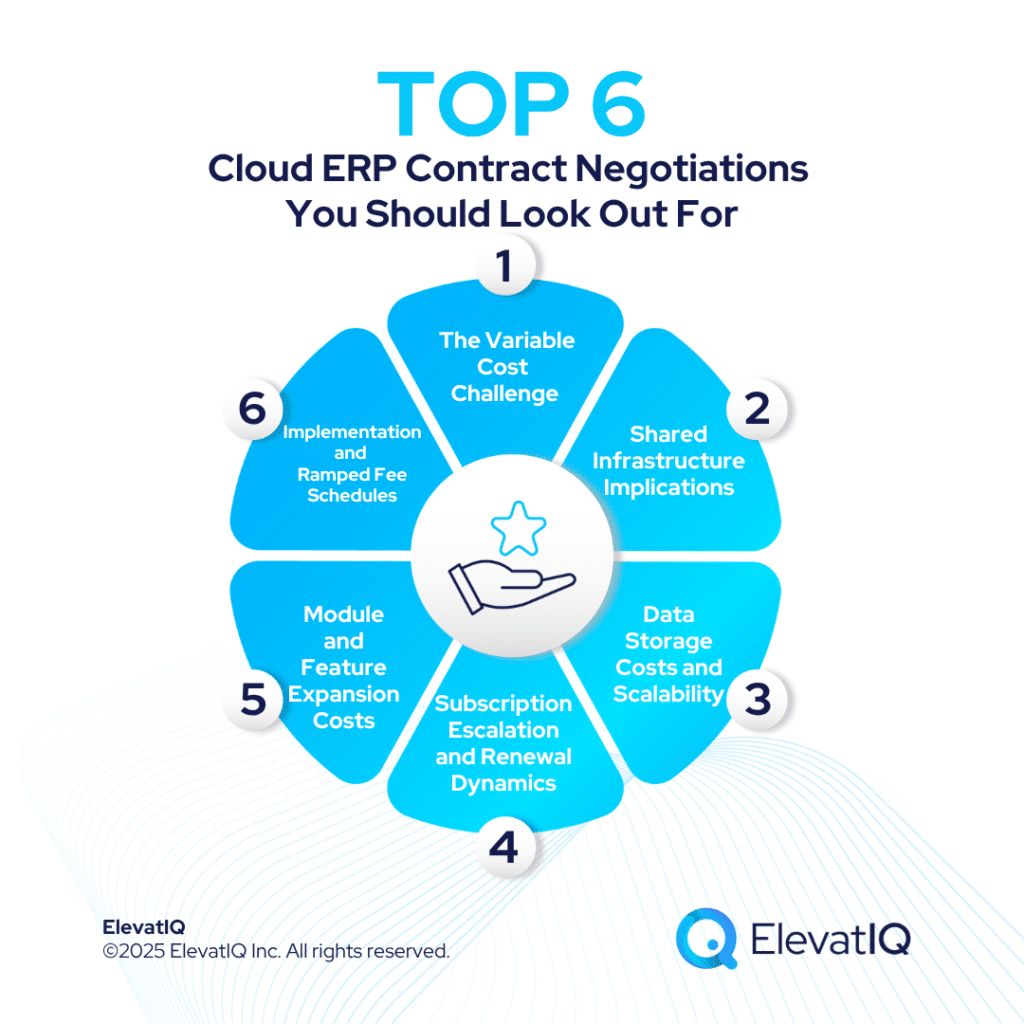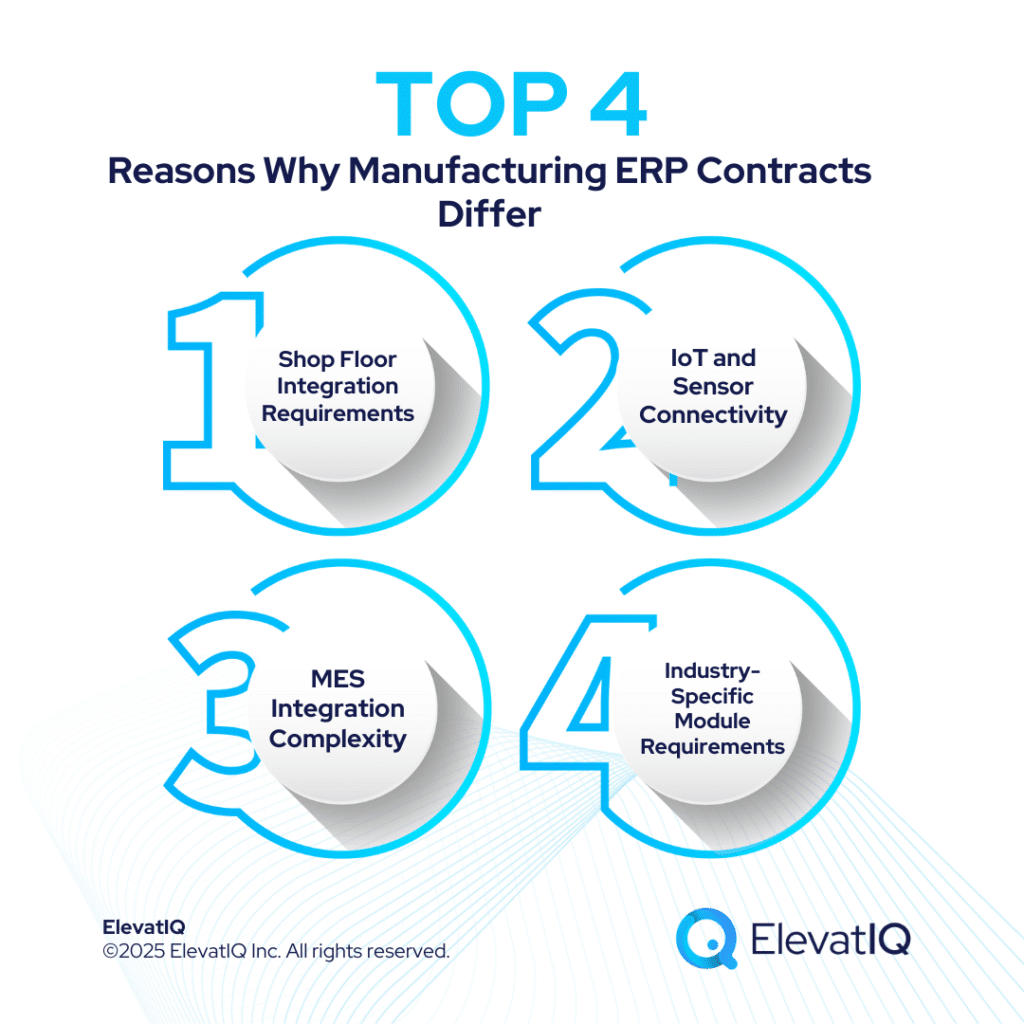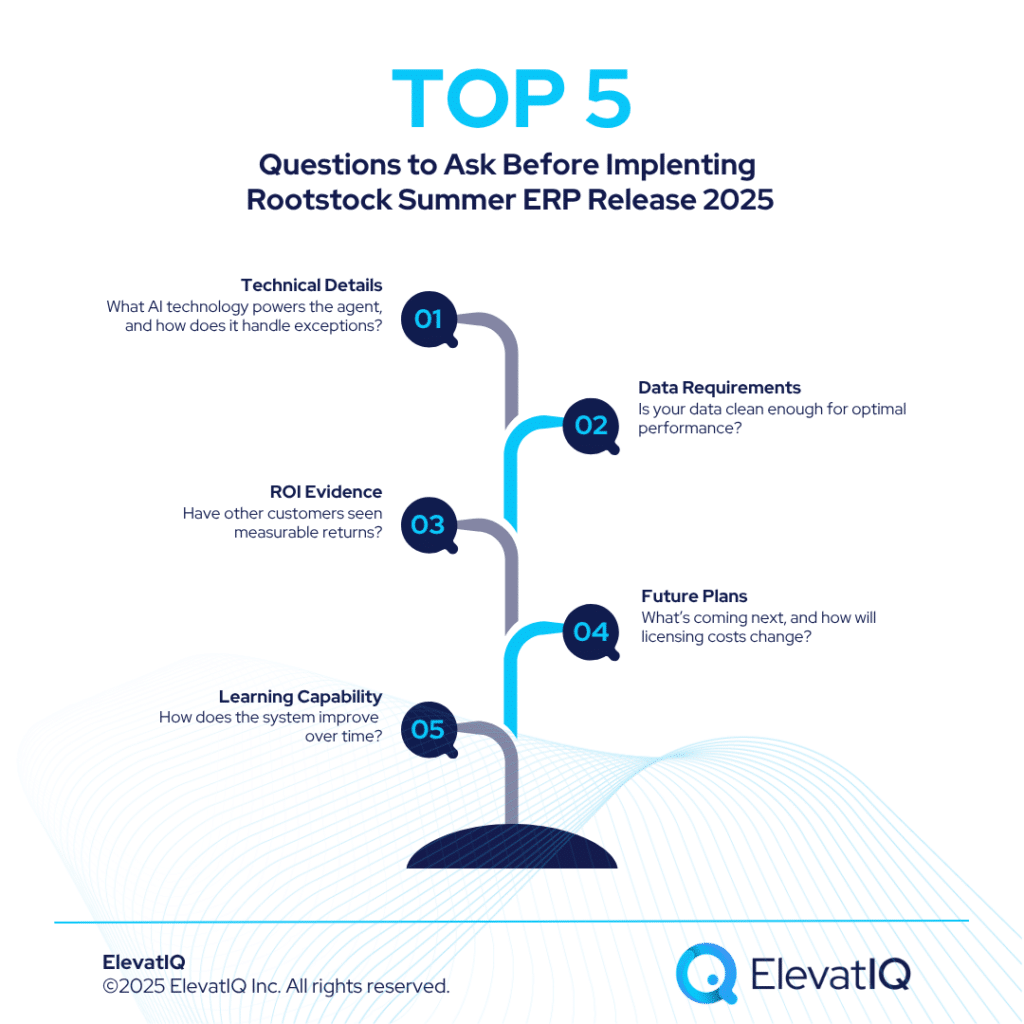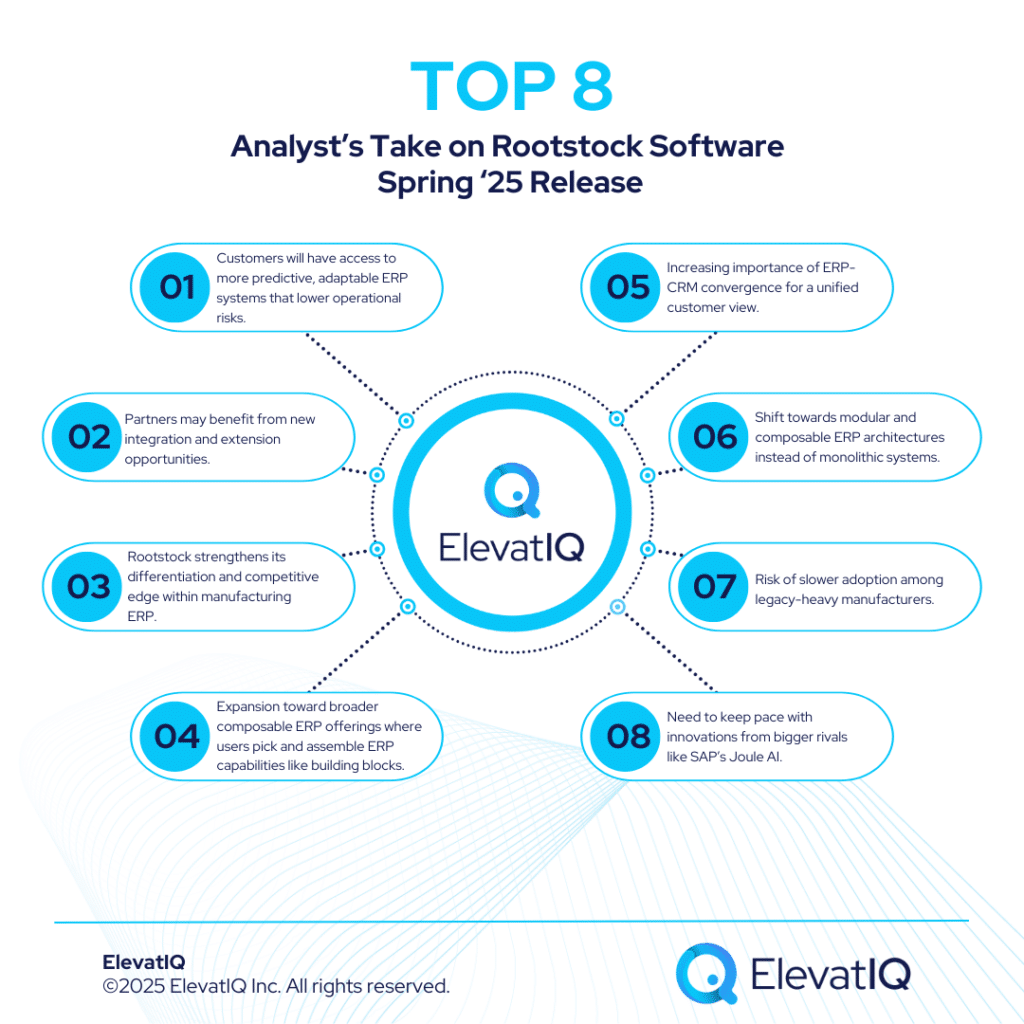Last Updated on November 24, 2025 by Shrestha Dash
Generative artificial intelligence represents the most rapidly adopted enterprise technology in history—ChatGPT reached 100 million users within just two months of launch—and ERP vendors are rushing to embed these capabilities throughout their platforms. From intelligent contract drafting and automated vendor negotiations to predictive analytics and natural language querying, generative AI promises to transform how organizations interact with enterprise systems and make business decisions.
However, as ERP vendors integrate generative AI features into their offerings, they’re introducing contract complexities that most procurement teams have never encountered. Who owns the insights AI generates from your data? Can vendors train their models on your proprietary business information? How are AI-powered features priced—and what prevents costs from escalating dramatically as usage grows? What happens when AI-generated recommendations prove incorrect or biased?
These questions highlight why negotiating generative AI features in ERP agreements has become one of the most critical yet least understood aspects of enterprise software procurement in 2025. Contract terms governing generative AI remain fluid and inconsistent across vendors, creating a narrow window where sophisticated buyers can secure favorable protections before standards solidify around vendor-friendly positions.
Understanding how to negotiate comprehensive generative AI provisions in ERP contracts—including pricing structures, data rights, output ownership, accuracy warranties, and liability allocations—separates organizations that harness AI’s value from those who discover too late that unfavorable terms have exposed them to escalating costs, lost intellectual property, and inappropriate risk.
The Generative AI Integration Surge in ERP Systems
Enterprise software vendors recognize generative AI as both a competitive imperative and a new revenue opportunity. It is expected that soon most of the organizations will use AI tools to support contract negotiations, while some of the sourcing events and supplier negotiations will be handled by AI-powered systems. This rapid adoption is driving vendors to embed generative AI throughout ERP platforms.
How ERP Vendors Are Deploying Generative AI
Leading ERP platforms now incorporate generative AI across multiple functional areas, creating diverse contract negotiation requirements:
- Contract Lifecycle Management: AI automatically drafts contracts from templates, redlines agreements against company policies, flags risky clauses, suggests alternative language, and predicts negotiation outcomes based on historical data patterns.
- Procurement and Supplier Negotiations: Autonomous AI agents conduct supplier negotiations at scale, analyzing should-cost models, proposing pricing adjustments, and securing better terms without human intervention—capabilities that raise questions about who bears responsibility when AI negotiators make commitments.
- Financial Analytics and Forecasting: Generative AI synthesizes financial data, generates variance explanations, produces natural language summaries of complex reports, and creates predictive models for cash flow, revenue, and risk scenarios.
- Natural Language Querying: Users ask ERP systems questions in plain language—”Show me aging inventory by location with photos”—and AI generates appropriate queries, visualizations, and narrative explanations without requiring technical database knowledge.
- Automated Report Generation: AI transforms structured ERP data into executive summaries, board presentations, and regulatory filings, raising intellectual property questions about who owns these AI-generated documents.
- Process Optimization Recommendations: By analyzing historical transaction patterns, AI suggests workflow improvements, identifies inefficiencies, and recommends process changes—insights that represent significant competitive intelligence if vendors can access or use this data.
The Contract Terms Gap for Generative AI in ERP Agreements
Unlike established technologies with mature contract frameworks, generative AI terms remain inconsistent and evolving across ERP vendors. This creates both risk and opportunity when negotiating generative AI features in ERP agreements:
Risk: Vendors’ standard contracts often lack provisions addressing AI-specific issues, leaving buyers exposed to unaddressed liabilities, unclear data rights, and unlimited cost escalation as AI usage grows.
Opportunity: The absence of standardized AI contract language means sophisticated buyers can secure favorable terms before industry norms solidify around vendor-preferred positions. Organizations negotiating today have leverage that may disappear as contract standards mature.
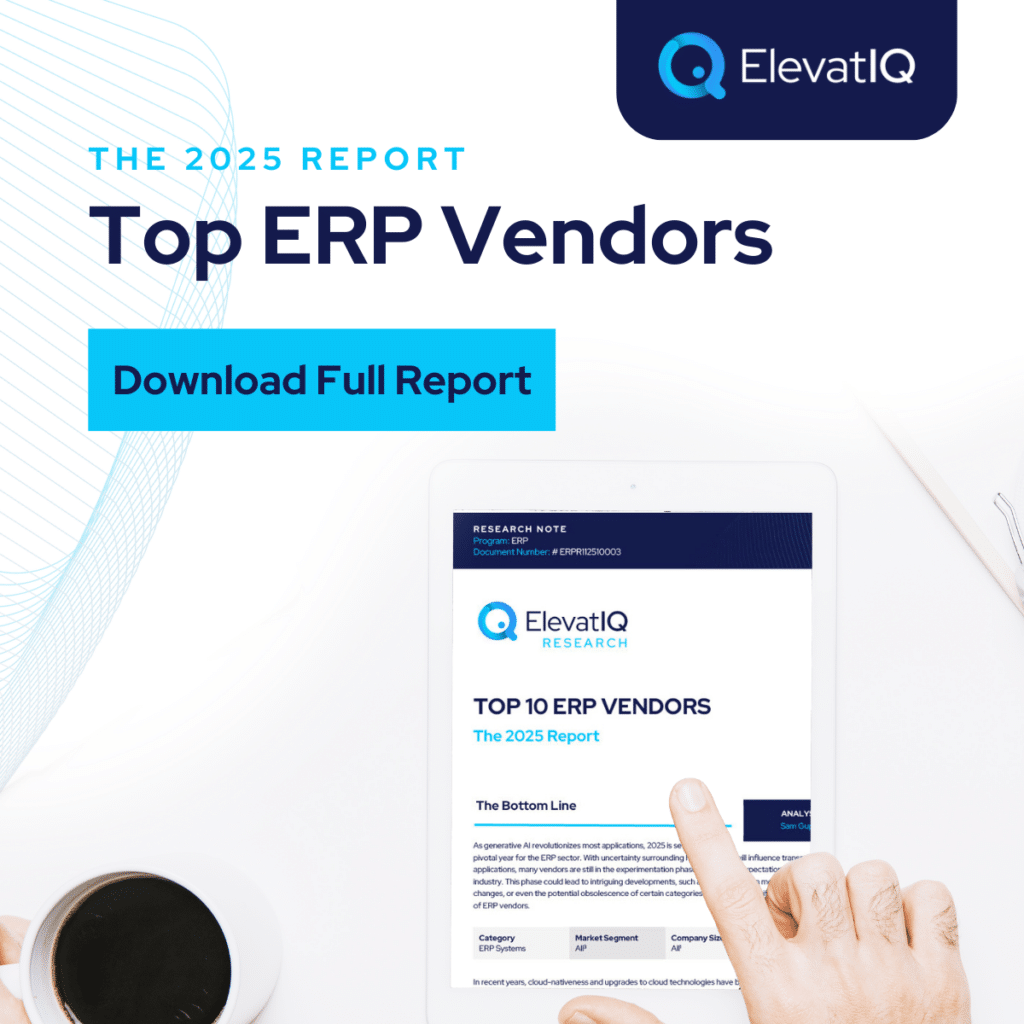
Pricing Generative AI Features in ERP Contracts
ERP vendors approach generative AI monetization through various models that create dramatically different cost implications and negotiation considerations.
Understanding AI Pricing Models
- Consumption-Based Pricing: Many vendors charge based on AI usage—per query, per document processed, per contract analyzed, or per API call. This creates variable costs that can escalate unpredictably as adoption grows across your organization. Microsoft, SAP, and Oracle increasingly employ consumption models for AI features, where costs tie directly to utilization volumes. Organizations discovering that routine AI usage generates thousands of queries daily face monthly bills far exceeding initial budget expectations.
- User-Based Add-Ons: Alternative approaches license AI capabilities per user as add-ons to base ERP subscriptions. Microsoft 365 Copilot for Finance costs $30 per user per month separate from Dynamics 365 subscriptions—creating incremental costs for each user wanting AI capabilities.
- Tiered AI Packages: Some vendors bundle AI capabilities into tiered subscription packages—basic AI in standard tiers, advanced features in premium tiers. While this simplifies budgeting, it may force organizations into higher-priced tiers to access specific AI features they need.
- Savings-Share Arrangements: For AI-powered procurement negotiations and contract optimization, some vendors structure pricing based on realized savings. Pactum, for example, typically charges 10-15% of negotiated savings their AI achieves—creating performance-based compensation but also raising questions about how savings are calculated and verified.
Negotiating AI Pricing Protections in ERP Agreements
Smart buyers negotiating generative AI features in ERP agreements establish comprehensive pricing frameworks that prevent future cost surprises:
- Consumption Caps and Limits
For consumption-based AI pricing, negotiate maximum monthly or annual charges regardless of actual usage. These caps protect against cost spikes when adoption accelerates or when automated processes generate more queries than anticipated. Include language such as: “Total monthly charges for AI consumption shall not exceed $X, with any usage above included allocations capped at $Y per thousand queries.” - Included Baseline Allocations
Rather than paying from the first query, secure substantial included allocations within base pricing (for example, 50,000–100,000 queries per month) to accommodate current demand and expected growth. - Alert Mechanisms and Transparency
Require vendors to provide alerts when AI consumption approaches thresholds (for example, 75% and 90% of monthly allocations) so you can adjust usage or renegotiate limits before incurring overages. Demand real-time dashboards showing usage by business unit, use case, or user group. - Predictable Overage Pricing
When consumption exceeds included amounts, lock in pre-agreed overage rates instead of allowing vendors to set them later. Define maximum per-unit rates for additional queries or processing minutes. - Most-Favored AI Pricing and Multi-Year Locks
Include most-favored-customer clauses for AI features to ensure you receive pricing no less favorable than similar customers. Wherever possible, secure multi-year price protections (for example, 3–5 years) specifically for AI capabilities to prevent sharp vendor-driven increases once your organization becomes dependent on AI features.

Data Rights and Training: Who Owns What in Generative AI Features in ERP Agreements
Generative AI systems learn from data, creating critical questions about vendor access to your information, ownership of AI-generated insights, and rights to use your data for model training—issues that standard ERP contracts rarely address adequately.
Your Data, Vendor Models, Training Concerns
When generative AI analyzes your ERP data—financial records, supplier contracts, customer information, operational metrics—several data rights questions emerge:
- Can Vendors Train AI Models on Your Data? Many standard agreements include vague language about using customer data for “service improvement” or “product development.” Applied to generative AI, these provisions potentially allow vendors to train their models on your proprietary business information, creating competitive intelligence they monetize across their customer base. Your supplier contract terms, pricing negotiations, operational efficiencies, and business strategies could inform AI recommendations vendors provide to your competitors if contracts don’t explicitly prohibit this data usage.
- Data Retention and Deletion: Generative AI processes enormous data volumes during normal operations. How long do vendors retain prompts, inputs, and intermediate processing data? Can this information be fully deleted upon request? Standard ERP data retention provisions often fail to address AI-specific data flows.
- Data Residency and Sovereignty: When AI processes ERP data, where does that processing occur? Organizations in regulated industries or operating internationally need assurances that AI processing respects data residency requirements and doesn’t inadvertently transfer information across jurisdictions violating compliance obligations.
Negotiating Data Protection in Generative AI Features in ERP Agreements
Comprehensive data protections are essential when negotiating generative AI features in ERP agreements, because AI systems may touch highly sensitive operational, commercial, and personal data.
- Explicit Training Data Prohibitions: Negotiate clear language that prohibits vendors from using your data, prompts, or outputs to train or enhance their models for other customers or general product improvement, for example: “Vendor shall not use any Customer data, prompts, queries, inputs, or AI-generated outputs to train, improve, or enhance Vendor’s AI models or services except as necessary to provide contracted services to Customer.”
- Tight Retention Controls: Require minimal or zero retention of prompts and intermediate AI data. For example: “Vendor shall not retain Customer prompts, queries, or AI-processing data beyond the minimum period required to deliver results and shall implement automated deletion within [24] hours.”
- Data Processing Transparency: Demand clear documentation of what data AI features access, how they process it, where processing occurs, and how it is secured. This should include architectural diagrams or narrative explanations suitable for risk, security, and compliance review.
- AI-Specific DPAs: If personal data is involved, ensure you have an AI-aware Data Processing Addendum that:
- Confirms you remain the data controller
- Defines the vendor as processor acting only under your instructions
- Lists sub-processors (including any AI infrastructure providers)
- Addresses encryption, access controls, breach notification, and sector-specific obligations
These protections reduce the risk of unintended data reuse, regulatory breaches, and loss of competitive intelligence.
Ownership of AI-Generated Outputs in ERP Agreements
When generative AI creates content using your ERP data—contract drafts, financial summaries, process recommendations, analytical reports—who owns these outputs represents a critical intellectual property question that contracts must address explicitly.
The Output Ownership Question
AI-generated content exists in a legal gray area. If AI drafts a contract using your company’s standard clauses and negotiation history, does that contract belong to you, the vendor, or somewhere in between? What about financial forecasts AI generates from your historical data? Process optimization recommendations based on your operational patterns? Standard ERP contracts often fail to address output ownership, creating ambiguity when you want to use, modify, distribute, or commercialize AI-generated content.
Negotiating Output Ownership When Addressing Generative AI Features in ERP Agreements
Secure unambiguous intellectual property rights to all AI-generated outputs:
- Comprehensive Output Ownership: Negotiate explicit provisions stating you own all content AI creates using your data or in response to your prompts:
- “As between Vendor and Customer, Customer owns all right, title, and interest in all outputs, content, analyses, recommendations, summaries, reports, documents, and other materials generated by Vendor’s AI systems from Customer data or in response to Customer prompts, queries, or instructions. Vendor hereby assigns to Customer all intellectual property rights in such AI-generated outputs.”
- Unlimited Usage Rights: Even with ownership provisions, clarify you can freely use, modify, distribute, and commercialize AI-generated outputs without restriction or additional vendor fees:
- “Customer may use, modify, reproduce, distribute, display, perform, create derivative works from, and otherwise exploit AI-generated outputs for any purpose, commercial or otherwise, without limitation and without payment to Vendor.”
- No Vendor Rights or Claims: Ensure contracts explicitly disclaim any vendor rights to outputs:
- “Vendor retains no rights, claims, or interests in AI-generated outputs and shall not use such outputs for any purpose except delivering contracted services to Customer. Vendor warrants it will not assert any intellectual property claims against Customer or third parties regarding AI-generated outputs.”
- Source Data Ownership Confirmation: Reinforce that underlying data used to generate AI outputs remains your exclusive property:
- “Customer retains all ownership rights in data, information, prompts, queries, and other inputs provided to AI systems. Vendor’s creation of outputs from Customer inputs does not diminish, limit, or transfer Customer’s ownership of such underlying information.”

Accuracy, Performance, and Liability for Generative AI in ERP Agreements
Generative AI systems can produce impressive outputs but also confidently present incorrect information, perpetuate biases, or generate recommendations that prove costly if implemented. Standard software warranties typically disclaim accuracy, leaving buyers bearing risk when AI outputs prove problematic.
The Accuracy and Hallucination Challenge
Generative AI “hallucinates”—confidently generating plausible-sounding but factually incorrect information. When ERP systems use AI to draft contracts, generate financial analyses, or make procurement recommendations, inaccuracies can create significant business consequences:
- AI-drafted contracts containing terms you never intended
- Financial forecasts based on AI misinterpretations of data patterns
- Supplier negotiations where AI agents make commitments misaligned with your strategies
- Process recommendations based on flawed analysis
Who bears liability when AI generates problematic outputs? Standard limitation of liability clauses capping vendor exposure at subscription amounts paid prove inadequate for AI-driven consequences.
Negotiating Performance Standards and Liability for Generative AI Features in ERP Agreements
Address AI-specific performance and liability through comprehensive contract provisions:
- Accuracy and Use Boundaries: For measurable tasks (such as extraction, classification, or summarization), negotiate accuracy thresholds and verification methods, for example: “Vendor warrants that AI-powered data extraction features shall maintain at least [X]% accuracy as measured against agreed sample sets.” For higher-risk use cases, require that all AI outputs include clear disclaimers and that your internal policy mandates human review before acting on AI-generated contracts, financial outputs, or supplier commitments.
- Liability Adjustments and Carve-Outs: Standard caps (for example, fees paid in the last 12 months) may be insufficient for AI-related failures. Seek higher caps or specific carve-outs for:
- Unauthorized use or disclosure of your data
- Material misrepresentations by AI systems in critical areas
- IP infringement claims caused by AI-generated content
- Discriminatory or biased AI outputs where vendors control design and training
- Right to Disable and Alternative Paths
Include rights to disable specific AI features without penalty if they prove inaccurate, risky, or non-compliant. Where feasible, require vendors to provide non-AI alternatives (even if less efficient) so your access to core ERP functionality does not depend entirely on AI components.
These provisions help align AI benefits with an acceptable risk profile for your organization.
Transparency, Explainability, and Auditability in Generative AI ERP Features
Understanding how AI reaches conclusions, what data informs outputs, and why systems made specific recommendations becomes critical for validation, compliance, and risk management—yet many AI systems operate as opaque “black boxes” vendors resist opening.
The Explainability Imperative
Organizations need to understand AI reasoning for several reasons:
- Validation: Business users must assess whether AI-generated recommendations make sense, rely on appropriate data, and align with organizational knowledge before acting on outputs.
- Compliance: Regulated industries require explaining automated decisions to regulators, auditors, and affected parties. AI systems that can’t explain how they reached conclusions create compliance risk.
- Error Correction: When AI generates problematic outputs, understanding the flawed reasoning enables correcting root causes rather than just addressing symptoms.
- Bias Detection: Identifying whether AI recommendations reflect inappropriate biases requires visibility into the factors AI systems weighted in decision-making.
Negotiating Transparency When Addressing Generative AI Features in ERP Agreements
Demand appropriate AI system transparency through comprehensive contract provisions:
- Explainability Requirements: Negotiate that AI systems provide explanations for significant outputs in language business users can understand:
- “For all AI-generated recommendations, analyses, or decisions materially impacting business operations, Vendor’s AI systems shall provide explanations describing: (a) key factors influencing the output; (b) relative importance of different data elements; (c) confidence levels associated with predictions or recommendations; and (d) alternative scenarios considered.”
- Data Source Disclosure: Require transparency about what data AI systems accessed to generate specific outputs:
- “Upon Customer request, Vendor shall disclose what data sources, datasets, and information its AI systems accessed to generate specific outputs, enabling Customer to verify appropriateness of information used in AI reasoning.”
- Model Documentation: Secure comprehensive documentation of AI model types, training methodologies, and decision factors:
- “Vendor shall provide Customer with detailed documentation describing: (a) types of AI models deployed; (b) general training methodologies; (c) categories of factors models consider; (d) known limitations or failure modes; and (e) validation testing results demonstrating model accuracy and reliability.”
- Audit Rights for AI Systems: Negotiate rights to audit AI decision-making logic when necessary for compliance, dispute resolution, or quality assurance:
- “Customer may audit Vendor’s AI systems, including the ability to review training data sources, model architectures, decision factors, and validation results, when reasonably necessary to verify compliance with contracted performance standards, investigate significant errors, or satisfy regulatory requirements. Vendor shall cooperate fully with such audits while protecting its legitimate confidential information.”
Regulatory Compliance and Evolving AI Governance
Artificial intelligence regulations are emerging rapidly worldwide—the EU AI Act, various US state-level requirements, sector-specific rules—imposing transparency, fairness, and accountability obligations that impact how AI can be deployed. Contracts must address compliance responsibilities in this evolving regulatory landscape.
The Regulatory Complexity of Generative AI in ERP Agreements
AI governance requirements vary by jurisdiction, industry, and use case. The EU AI Act categorizes AI systems by risk level, imposing strict requirements on high-risk applications. US regulations focus on sector-specific concerns—consumer protection, employment discrimination, financial services transparency.
Organizations deploying generative AI in ERP systems must ensure compliance with applicable requirements, but who bears responsibility—the vendor providing AI capabilities or the customer deploying them?
Negotiating Compliance Provisions for Generative AI Features in ERP Agreements
Clarify compliance obligations and protections when negotiating generative AI features in ERP agreements:
- Regulatory Compliance Warranties: Secure specific warranties that AI features comply with applicable regulations for your industry and geographies:
- “Vendor warrants that AI features comply with all applicable laws, regulations, and industry standards governing artificial intelligence use, including without limitation the EU AI Act, applicable US state AI regulations, and sector-specific requirements for [Customer’s industries]. Vendor shall maintain such compliance throughout the term.”
- Compliance Responsibility Allocation: Clearly define whether vendors or customers bear responsibility for ensuring AI deployments meet regulatory requirements:
- “Vendor is responsible for ensuring its AI systems comply with applicable AI-specific regulations. Customer is responsible for deploying AI features in compliance with use-case-specific regulations (employment, credit, consumer protection) applicable to Customer’s business activities. Vendor shall provide documentation and support necessary for Customer to assess and maintain such deployment compliance.”
- Regulatory Change Obligations: As AI regulations continue evolving rapidly, establish vendor obligations to update systems maintaining compliance with new requirements:
- “As AI regulations evolve, Vendor shall update AI systems as necessary to maintain compliance with new or amended legal requirements applicable to Vendor’s provision of AI services. Vendor shall notify Customer of regulatory changes potentially affecting Customer’s AI deployment and shall provide guidance regarding necessary adjustments to maintain Customer’s compliance.”
- Indemnification for Compliance Failures: Secure vendor indemnification for regulatory violations stemming from AI system deficiencies:
- “Vendor shall indemnify, defend, and hold harmless Customer from third-party claims, regulatory actions, and penalties arising from Vendor’s AI systems failing to comply with applicable AI regulations, provided Customer used AI features in accordance with documentation and did not modify AI functionality.”
Strategic Negotiation of Generative AI Features in ERP Agreements
Generative AI represents transformative capability for ERP systems while introducing contract complexities most procurement teams have never encountered. As vendors rush to embed AI throughout their platforms, they’re creating pricing structures, data usage terms, and liability allocations that often favor vendor interests at buyer expense.
Successfully negotiating generative AI features in ERP agreements requires addressing AI-specific considerations across pricing (consumption caps, included allocations, transparent tracking), data rights (training prohibitions, minimal retention, comprehensive DPAs), output ownership (explicit IP assignment, unlimited usage rights), performance and liability (accuracy thresholds, enhanced liability for AI failures, bias protections), transparency (explainability requirements, model documentation, audit rights), and regulatory compliance (specific warranties, responsibility allocation, update obligations).
Organizations that negotiate comprehensive AI protections today—while contract standards remain fluid—position themselves for cost-effective AI adoption that enhances rather than constrains operations. Conversely, buyers who accept standard vendor terms or treat AI as an afterthought discover too late that unfavorable provisions have exposed them to escalating costs, compromised data rights, unclear output ownership, and inappropriate risk allocation.
The window for securing favorable generative AI contract terms remains open but won’t last indefinitely. As industry standards solidify around vendor-preferred positions, the negotiation flexibility sophisticated buyers enjoy today will disappear. Organizations navigating ERP procurement must prioritize AI contract terms now, before this strategic advantage closes.
For enterprises negotiating ERP agreements in the generative AI era, independent advisory expertise provides essential guidance through the rapidly evolving dynamics of AI pricing, data rights, output ownership, and liability allocation. The specialized knowledge advisors bring to AI-specific contract negotiations typically delivers value far exceeding advisory costs through improved terms, protected rights, and avoided pitfalls that serve organizations throughout their AI-enhanced ERP lifecycle.
